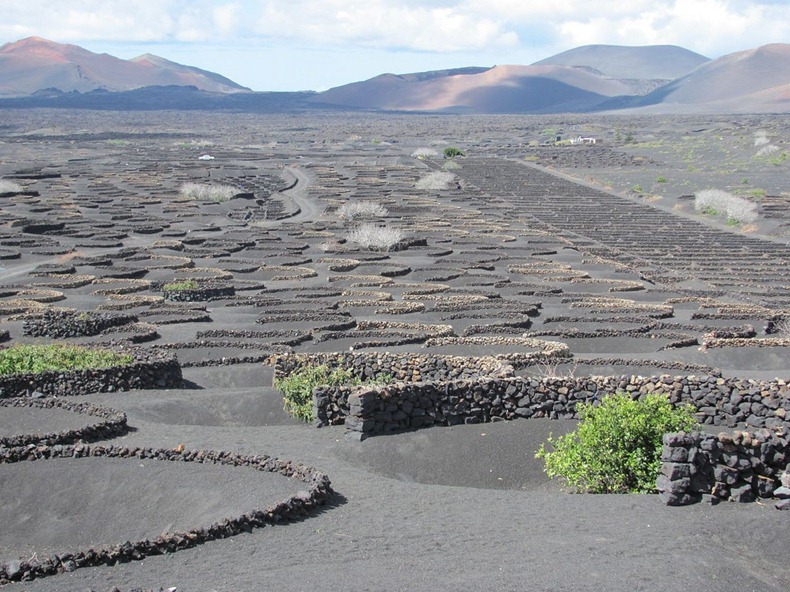Lanzarote is a Spanish island in the Atlantic Ocean located some 125 km off the coast of Africa and 1,000 km from the Iberian Peninsula. The island was formed by volcanic eruptions more than 15 million years ago. The entire island is composed of volcanic rock and sand. There are no lush green fields, only solidified lava streams and vast plains of grim, black soil. The weather is hot and dry throughout the year, and rain is rare. On an average there are no more than 16 days of rainfall annually. It’s surprising that anything grows here at all. But Lanzarote has extensive vineyards and grapes are grown in abundance for wine cultivation. How?
Each single vine is planted at the base of a roughly three-foot-deep pit about four to five meters wide and surrounded by semi-circular stone walls called Zocos. The pit serves two purposes – 1) its depth protects the plant from strong winds and 2) the volcanic soil retains moisture incredibly well, drawing dampness from the occasional clouds that pass over, so that even in the absence of rainfall, the plant receives enough water for it to flourish.
Vines pits are scattered over vast regions of central Lanzarote called La Gería. From a distance, it look as if the entire region has been hit by thousands of meteors. These visual elements create a truly unique landscape that is both surreal and beautiful.
Wine has been produced on the island since the 1500's and really kicked into gear when America was discovered and ships were crossing the Atlantic. Everything was great until a large eruption happened in the 1700's that covered most of the best farming lands on the island with lava. Grain and cereal production, the staples of the time, were destroyed. The farmers instead of fleeing the island for greener pastures in Europe began to rethink their methods of cultivation.
The farmers quickly figured out that the newly deposited volcanic rock (called picon) was excellent in absorbing moisture from the air and retaining it in the soil. This enabled a method of dry cultivation known as ‘enarenado’ which is completely unique to Lanzarote. The only down side to this method of cultivation is that everything has to be done by hand. Vine cultivation is a laborious process in Lanzarote.
Lanzarote now has nearly 2,000 hectares of active vineyards that together produce an average of 2 million liters of wine annually. For an island that is only 862 square km this is a sizeable proportion of available land space.





















I seem to remember that Lanzarote is part of the Canaries... Isn't it?
ReplyDelete